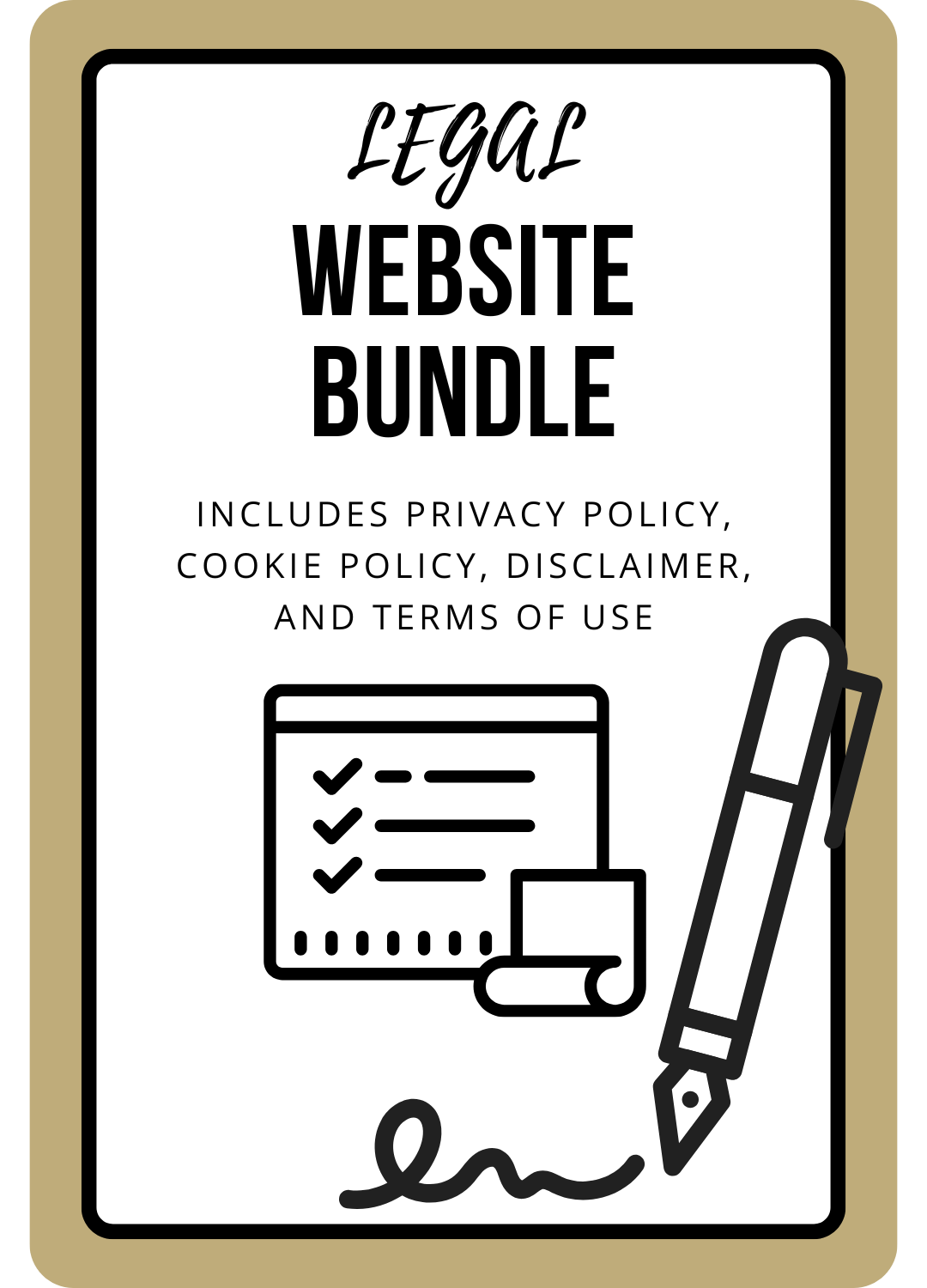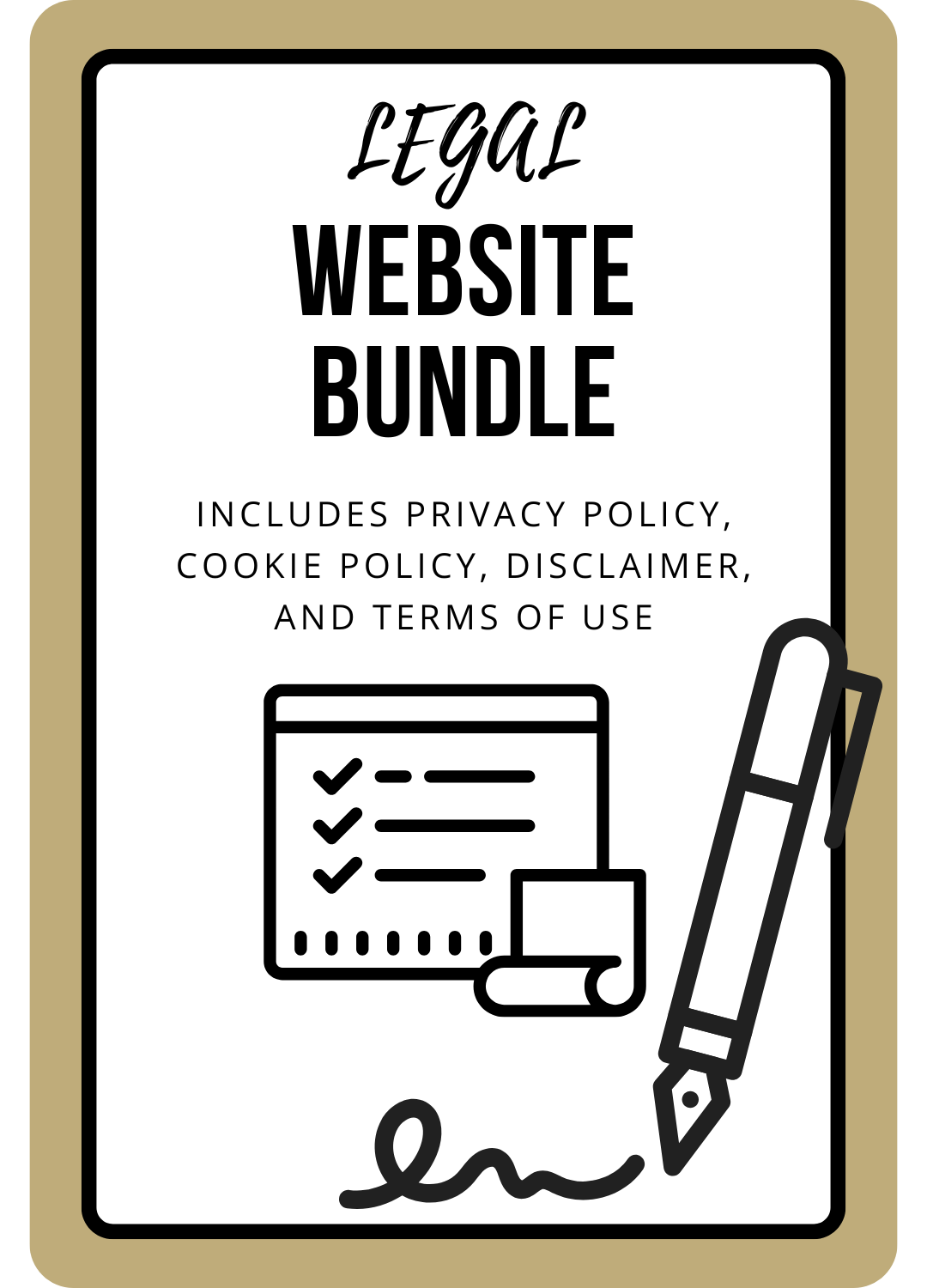Does My Website Need Terms and Conditions? 7 Key Protections You’re Missing Without Them
Does my website need terms and conditions? If you collect emails, sell anything online, or even only share your own content — the answer is yes.
Website terms and conditions might sound like boring legal filler, but they’re the single document that tells users what they can (and can’t) do on your site, limits your liability, and protects the content you’ve worked hard to create.
Without them, one unhappy reader, a faulty plugin, or a few eager copycats could leave you exposed.
As a lawyer, I get variations of “Does my website need terms and conditions?” from clients all the time. And my answer is always the same: even the simplest website can face serious problems without a proper website terms and conditions template — especially if you use third-party tools, affiliate links, or collect user data.
In this post, you’ll learn 7 key protections your website gets from having Terms and Conditions — and why a terms and conditions generator or free website terms and conditions template usually won’t give you the coverage you need.
➡️ Protect your website the easy way — get the full Legal Website Bundle (which also includes your Privacy Policy and Disclaimer Page).
This blog post is all about the 7 key answers to the question, “Does my website need terms and conditions?”
Does my website need terms and conditions?
7 Reasons You Need a (Proper) Website Terms and Conditions Template
1. They Define the Rules for Using Your Website
Your website is your online home — and just like any home, it needs house rules.
Your website terms and conditions set those boundaries by explaining what visitors can and cannot do when using your site. They cover everything from copying content to spamming your contact form or trying to hack into your back-end.
Without these ground rules, you have no written right to remove users, block bad actors, or take action when someone misuses your site.
Here’s what a proper website terms and conditions template should do for you:
Spells out acceptable use. Users must follow lawful behaviour when browsing, commenting, or purchasing.
Bans harmful actions. It prohibits activities such as distributing viruses, scraping data, or redistributing your content without permission.
Gives you enforcement power. You can suspend or terminate access instantly if someone violates the rules.
💬 Example: A blogger noticed bots scraping her posts to repost elsewhere. Because her website terms of use explicitly prohibited data mining and copying, she could demand immediate removal — and the host complied.
👉 And there’s no need to wonder how to create terms and conditions for website pages! All these rules are already built into my Website Terms and Conditions Template inside the Legal Website Bundle!
2. They Protect You from Liability for Third-Party Content, Tools & Links
Third-party tools or links on your website can mess up. Think about the plugins, schedulers, embedded videos, affiliate links, or guest posts you use. Each one introduces content or code that you can’t control.
If a third-party site changes its terms, goes offline, or a plugin update breaks something, your visitors could lose access, see errors, or even experience data loss — and many will blame you.
That’s why you need a proper website terms and conditions template and a disclaimer page that explain that:
You’re not responsible for the accuracy, security, or reliability of third-party websites, resources, or tools.
Any transactions between your users and those third parties are at their own risk.
You can’t guarantee that plugins, widgets, or embedded apps will always work as intended.
“Do I need a disclaimer on my website?” Yes, you do! Without one, you’re effectively taking responsibility for everything users do or see through your site — even things outside your control. Your disclaimer disclaims that responsibility, and your website terms (should) add ironclad limitations of liability on top of that as your legal armor.
Both the Website Terms Template and the Disclaimer Page inside the Legal Website Bundle include these third-party protections — already drafted and ready to customize for your site.
3. They Limit Liability for How Readers Use Your Information
You can’t control what people do with the information you share online — but you can control whether you’re held responsible for it.
Even if your content is purely educational, a reader may still perceive it as personal advice. If things go wrong, they could claim your post caused their loss, injury, or business setback. Without strong website terms and disclaimers, you’re left vulnerable to major risks.
That’s why you need a proper website terms and conditions template and a disclaimer template that work together to protect you by making it crystal clear that:
All content on your site is for informational and educational purposes only — not tailored, professional, or guaranteed advice.
Readers use your information at their own risk.
You’re not liable for any outcomes, damages, or decisions based on what visitors do with your content.
Your site does not create a professional-client relationship unless there’s a signed written agreement.
💬 Example: Imagine you publish a blog post called “5 Easy Exercises for Beginners.” A reader tries one of the workouts, injures their back, and claims your content caused the injury. Without clear disclaimers and limitations of liability in your website terms, you could be accused of providing unqualified medical or fitness advice — and having to pay for the injury!
👉 These protections are pre-written in both the Website Terms Template and the Disclaimer Page (which includes niche-specific disclaimers for your business)—included in my Legal Website Bundle.
4. They Protect Your Content and Intellectual Property
Every word, image, video, or graphic on your website is your creation — and that means it’s protected by copyright from the moment you publish it.
“So, then does my website need terms and conditions if I already have copyrights?
Yes—even if you’re protected by copyrights. Here’s why:
Some people assume you used stock photos or outsourced your copywriting, so they think your content is fair game.
Others genuinely believe they can copy your images or text onto their own platforms as long as they “credit” you with a link — which still counts as infringement.
Your website terms and conditions template should make ownership clear by stating that:
You (the website owner) own all content published on your site — including text, photos, designs, and downloads.
Visitors are not allowed to copy, reproduce, modify, or share your content without written permission.
You have the right to take legal action if someone infringes on your copyrights or trademarks.
💬 Example: A photographer found one of her portraits reposted on a local brand’s Instagram with the caption “📸 Credit: [your website link].” Because her website terms explicitly stated that all photos were her intellectual property, she could send a formal cease-and-desist letter, and the competitor had to remove them immediately.
🛡️ Protect Your Website Before Problems Start
You’ve now seen how your website terms and conditions and disclaimer work together to:
✅ Set clear rules for how visitors use your site
✅ Limit your liability for third-party tools, links, and integrations
✅ Protect you from being blamed for how readers use your information
✅ Secure your copyrights and creative content
Now, you just need the right templates.
That’s where my Legal Website Bundle comes in — a lawyer-drafted, ready-to-use set of legal pages designed for online entrepreneurs, coaches, and creators, including:
Website Terms & Conditions Template — covers rules, liabilities, and intellectual property
Privacy Policy Template — legally required if you collect any personal data
Disclaimer Page Template — limits liability for your content and professional scope
➡️ Protect your business and your content today — get the full Legal Website Bundle.
5. They Give You the Right to Use Testimonials and User-Generated Content
Here’s an answer you certainly didn’t expect when you asked, “Does my website need terms and conditions?”
The right template gives you the legal right to use any testimonials, reviews, photos, or other content people submit through your website.
When someone submits a testimonial, review, photo, or comment through your website, that content remains the property of the submitter unless your website terms grant you a license to use it.
That’s why you need a proper Website Terms and Conditions Template that includes a built-in clause that ensures that:
Anyone submitting content to your website confirms they own the rights to what they share.
You’re granted a royalty-free, worldwide license to use, edit, or display that content across your website, emails, and marketing materials.
You can identify the submitter by name or general location (or keep it anonymous) without needing further approval.
You’re not required to pay compensation each time you use the material.
💬 Example: A client uploads a glowing testimonial through your website’s form. You feature it on your homepage. Months later, they change their mind and demand that you remove it. Without clear Terms granting usage rights, they could legally insist you delete it.
But with the right license clause, you can confidently feature it on your homepage, emails, or materials — no extra permission needed.
👉 This permission is already written into the Website Terms and Conditions Template inside my Legal Website Bundle — so you can freely showcase testimonials and content submissions while staying fully compliant with copyright and privacy laws.
6. They Set Governing Law & Jurisdiction (So You Stay in Home-Court Territory)
If a legal dispute ever arises about your website, you don’t want to be dragged into court halfway across the world — or have someone try to sue you under their country’s laws.
Proper, fluff free website terms and conditions eliminate that risk by clearly stating which laws apply to your website and where any disputes must be handled.
This clause ensures that:
All disputes are governed by your country’s (or state’s) laws — not the visitor’s.
Legal proceedings happen in your chosen city or country, not wherever the user happens to live.
You retain the right to recover legal costs if someone brings an unreasonable or unsuccessful claim.
💬 Example: A U.S.-based coach sells an online course. Someone in France demands a refund and threatens to sue in their local court. Because her website terms specify that disputes are governed by Florida law and resolved in Florida courts, she doesn’t have to defend herself overseas.
👉 The Website Terms and Conditions Template inside my Legal Website Bundle already includes this governing law and jurisdiction clause — just fill in your country or state, and you’re protected from international legal chaos.
7. They’re Required by Many Platforms & Service Providers
Even if you never get sued, there’s another reason you can’t skip website terms and conditions (and a privacy policy): many of the platforms, payment providers, and software tools you use won’t let you operate without them.
“Really... Do I need a privacy policy on my website, too?” Yes, they’ll most definitely require that you also have a privacy policy, so you comply with privacy laws.
From payment processors to ad networks, major online services now require proof of legal pages before approving your account:
Payment gateways (like Stripe or PayPal) require published terms to process transactions.
Ad networks and affiliate programs (such as Google Ads or Amazon Associates) require that your website be legally compliant.
Website builders and e-commerce platforms often require you to upload your website terms and conditions and a privacy policy before going live.
👉 The Legal Website Bundle includes every required legal page you need to get accepted by major platforms and payment tools.
The ULTIMATE Template Bundle: How to Create Terms and Conditions for Website & Other Legal Pages with Ease
So, in answer to your question, “Does my website need terms and conditions?”: Yes—without a proper website terms and conditions template, you’re exposed to unnecessary risks every time someone visits, reads, or buys from you.
Let’s recap the seven protections with the right website terms and conditions:
1️⃣ Rules that control how visitors can use your site
2️⃣ Protection against liability for third-party tools and links
3️⃣ Limitations on what readers can hold you responsible for
4️⃣ Copyright protection for your content
5️⃣ Rights to use testimonials and other submissions
6️⃣ Clear governing law and jurisdiction
7️⃣ Compliance with the platforms and services you rely on
However, generic or free website terms and conditions templates rarely include all of that.
👉 Get the Legal Website Bundle — it includes all three essential pages (Website Terms and Conditions, Privacy Policy, and Disclaimer Page), so you can publish confidently, stay compliant, and protect your content from day one.
Protect your business. Protect your time. Protect your content.
➡️ Get the Legal Website Bundle today.
This post was all about the 7 key reasons to the question, “Does my website need terms and conditions?” — to stay compliant, protected, and ready for any platform.
Other posts you may like:





